There is a fine line between reality and fantasy, and most photographers immediately choose in which of the two spaces to act. And then there are a few, like Gregory Crewdson, who instead move in constant balance walking that boundary almost as if to challenge the viewer to decide which space to place them in. And so, if you enter the new Gallerie d’Italia in Turin’s Piazza San Carlo, opening in May 2022, you will be immediately catapulted into the heart of a strange American province, thanks to the exhibition Gregory Crewdson. Eveningside, here through Jan. 22, 2023. Born 1962 in New York, Gregory Crewdson is now considered among the greatest contemporary photographers, and he is exhibiting here, for the first time, his new series of photographs that gives the exhibition its title: Eveningside (2021-2022). Partly commissioned by Gallerie d’Italia/Intesa Sanpaolo, they were conceived by the artist as the final act of a trilogy spanning ten years of work, whose two previous projects, Cathedral of the Pines (2012-2014) and An Eclipse of Moths (2018-2019), are also on view to underscore the continuity of the path, introduced by the Fireflies series of 1996, produced in completely different ways than those that would later characterize Crewdson’s work, since these photographs, which capture the fireflies that passed near the photographer’s family cabin in Massachusetts in the evenings, are executed without any kind of construction.
Crewdson then worked on very large print formats that fill the field of vision and draw the viewer directly into his imagery. It is a reconstructed reality his, as each photo is staged with actors (including partner Juliane Hiam and their children), studied lighting, and post-production interventions. At least forty people typically work on his sets, involved in a long preparation that lasts months in which the photographer defines every detail. Yet the first impression the images give back is that of a real, perhaps extreme, but nevertheless plausible American province.
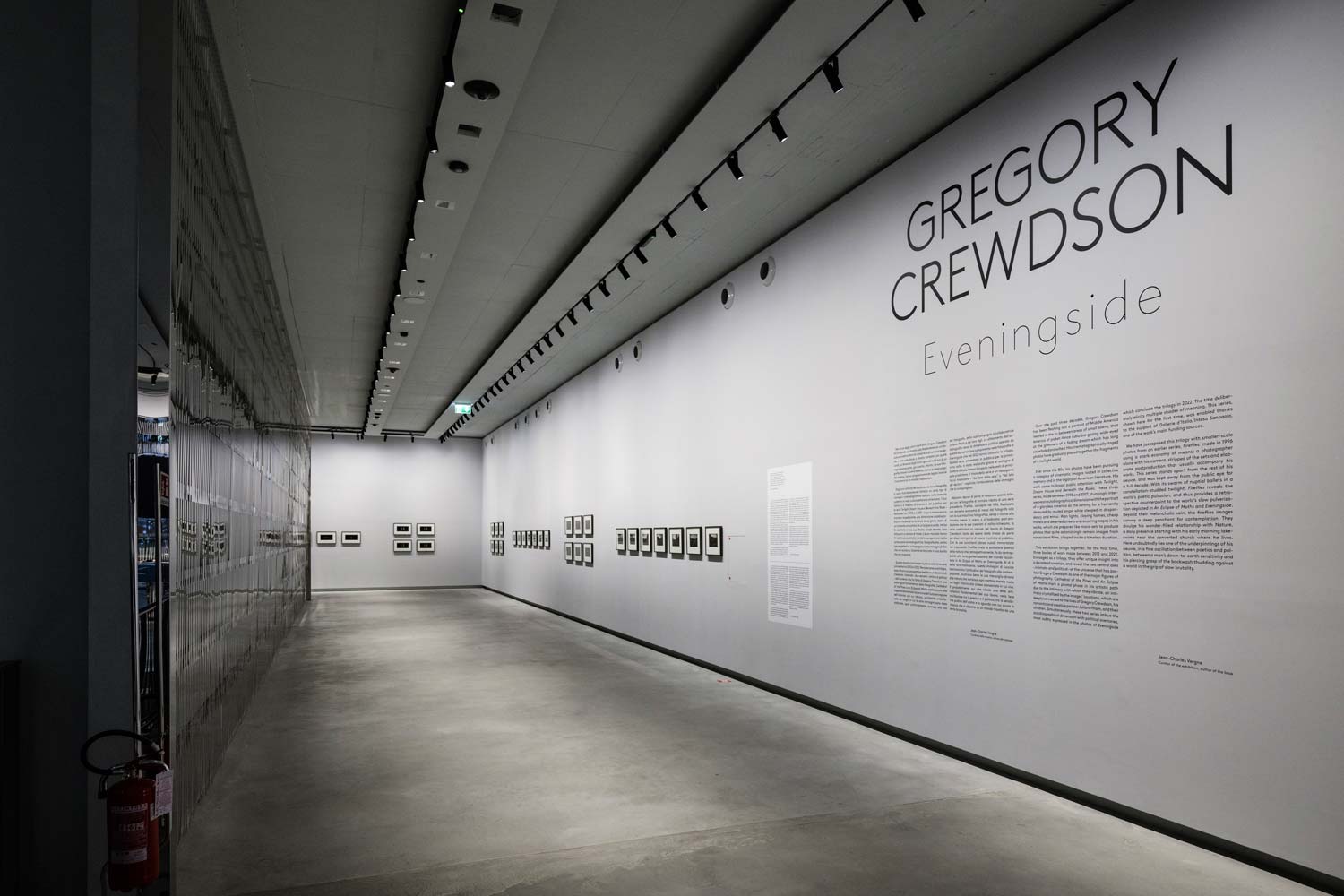
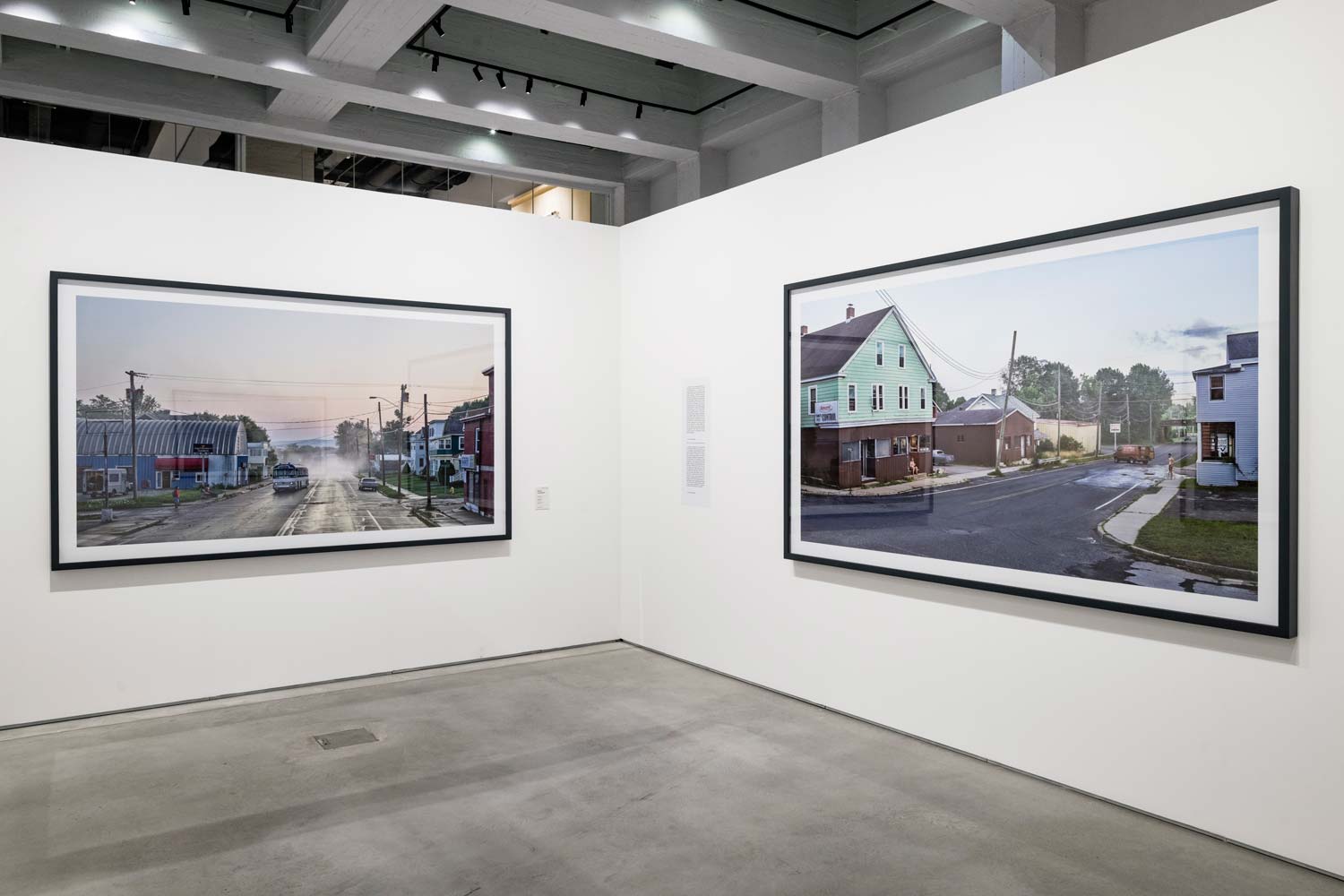
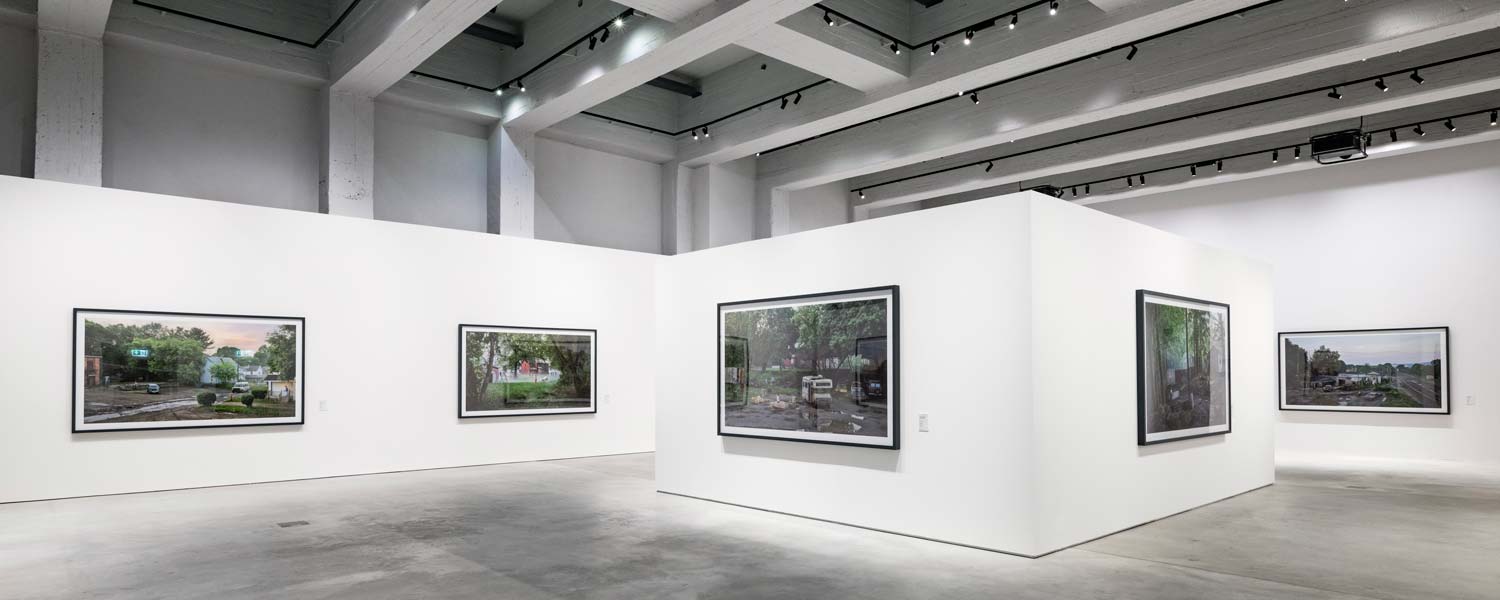
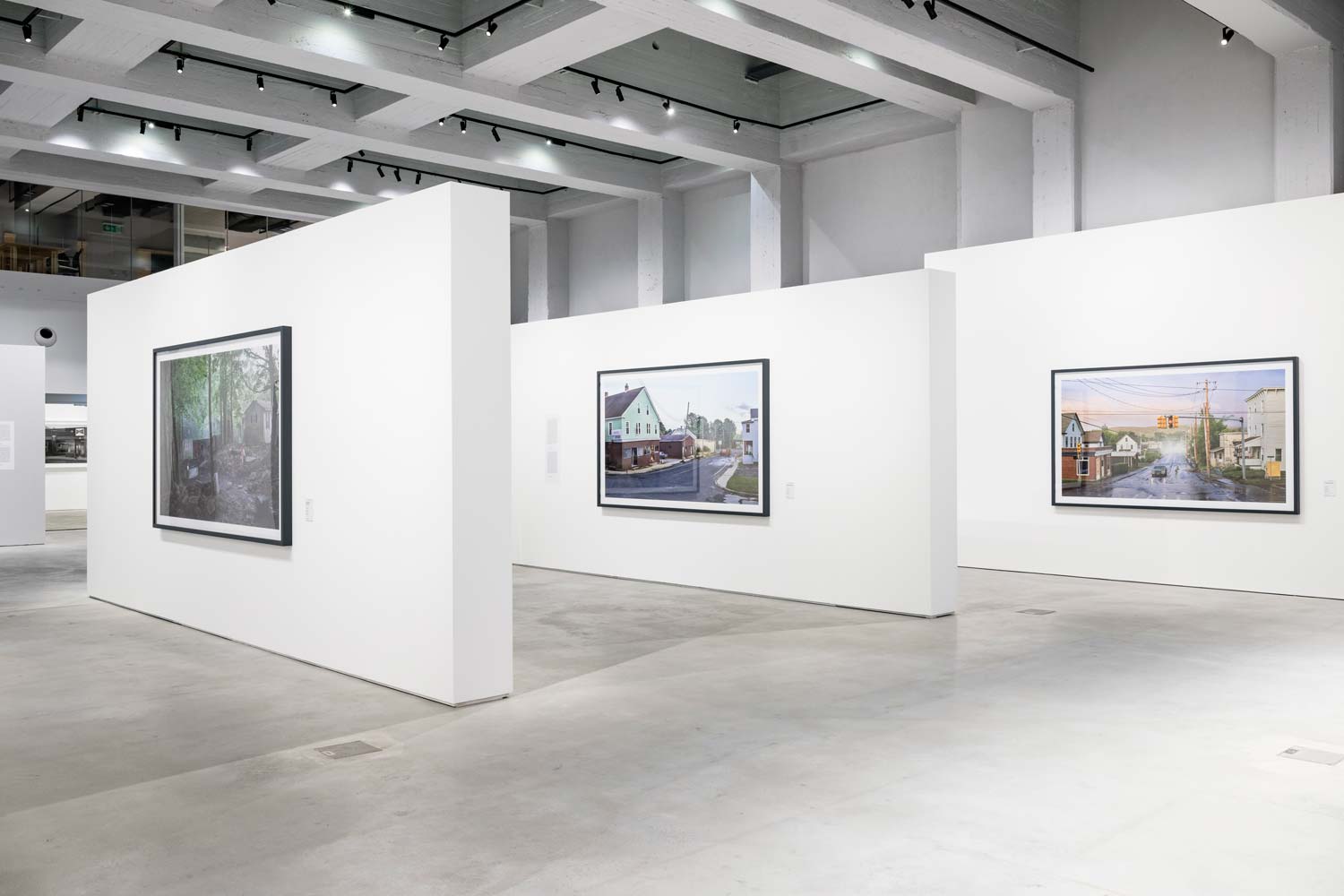
Cathedral of the Pines, which opens the exhibition, is a reflection on the relationship between nature and man. In the photograph titled The Matt ress (2014), in the midst of a remote forest of majestic pines, there is a mattress lying on the ground, covered with cut flowers. A man contemplates it, probably a policeman who got out of one of the patrol cars parked at the bottom. But an image reminiscent of the paced drama of some mystery films is actually a scene of pure contemplation, as if time were standing still around the discovery of this object in the woods, evoking an action that took place there, but without drawing the boundaries of the narrative. In this series, for the first time in Crewdson’s work, the light is natural, barely forced at key points in the narrative. The saturated colors combine with an overall veiling that evokes a photograph of the past, while the definition and photographic detail denote the use of entirely contemporary technology.
Thus, in the subsequent Woman at sink (2014), a woman in front of the window contemplates an object placed on the plane, illuminated by a light as natural as it is unreal. That unique instant that is the very substance of photography in Crewdson’s photographs takes on the power to evoke, with incredible force, a before and an after. One almost holds one’s breath in front of his images, along with his characters. “As is often the case in Crewdson’s work, the world cracks imperceptibly,” writes Jean-Charles Vergne, curator of the exhibition and author of the catalog texts.
It reminded me of the atmospheres of a book I loved, now vanished from the market, by Leif Enger entitled Peace as a River (Fazi Editore, 2002) that moves in the same delicate balance between an extremely concrete reality, made up of simple people and everyday gestures, of a majestic nature that surrounds and protects them, and a surreal something that pervades everything, in a constant expectation that something magical will happen. And while even the forests described are not the same (Enger’s protagonists move in Minnesota, Crewdson’s in Massachusetts), the hope that underlies each image is the same even when it is filled with desolation and bewilderment.
![Gregory Crewdson, Untitled [46-69] (1996; stampa alla gelatina ai sali d'argento, 16,1 x 33 cm) © Gregory Crewdson Gregory Crewdson, Untitled [46-69] (1996; stampa alla gelatina ai sali d'argento, 16,1 x 33 cm) © Gregory Crewdson](https://cdn.finestresullarte.info/rivista/immagini/2022/2188/gregory-crewdson-untitled-14.jpg)


Even in An Eclipse of Moths, the photographer’s most political project, resignation never trumps narrative. In this second journey, Crewdson moves over vast and desolate post-industrial landscapes, those of Pittsfield, Massachusetts, which lived for years on the prosperity generated by the local General Electric headquarters that employed most of its residents, and which after the factory’s closure saw its lights gradually go out. This is the “moth eclipse” to which the title alludes, a metaphor for the disappointment that lurks beneath the facade of the American dream. Here, too, the photographer employs a variety of media to create images in which abandoned places are depicted with a limpid beauty, full colors, a light so impossible as to appear supernatural. These images strike a first impression of wonder and serenity, but only when the viewer’s mind begins to perceive the details and become aware of the subject of the story does their more dramatic side emerge.
Starkfield Lane (2018-2019) is a picture more than three feet by two feet, which has colors reminiscent of Edward Hopper’s landscapes and the same feeling of loneliness and suspension as his paintings. It is impossible not to be fascinated by the diffuse light, which does not correspond to any daylight, and not to be at the same time disquieted by the mystery that shines through the whole. Yet, what remains is the hope for redemption, a redemption of religious significance, so well evoked by Redemption Center (2018-2019) with its clear symbols: a semblance of a cross in the center of the image, the sign on the wall of the Redemption center, a contrite man searching the reflection of the water for hope.
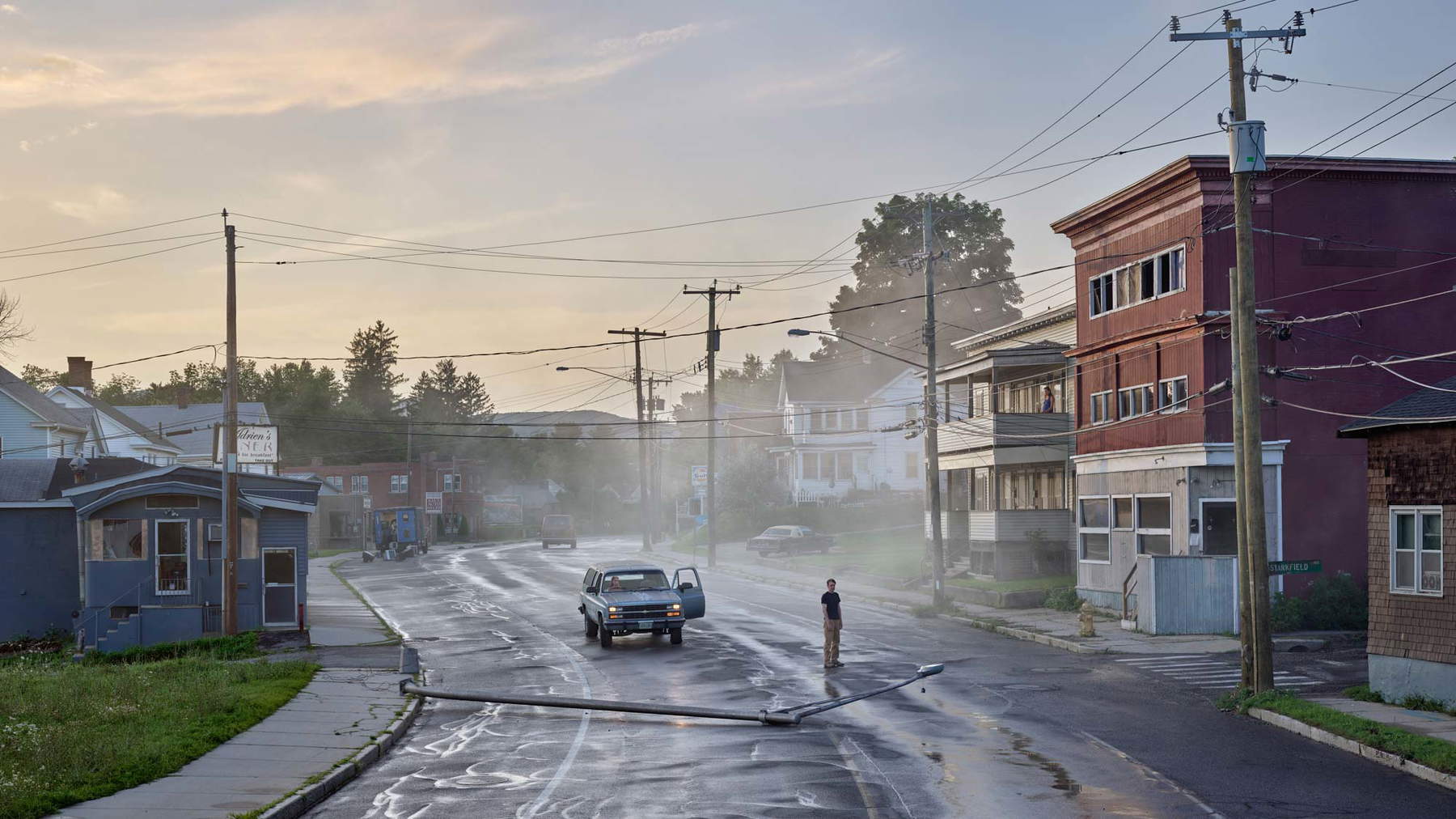
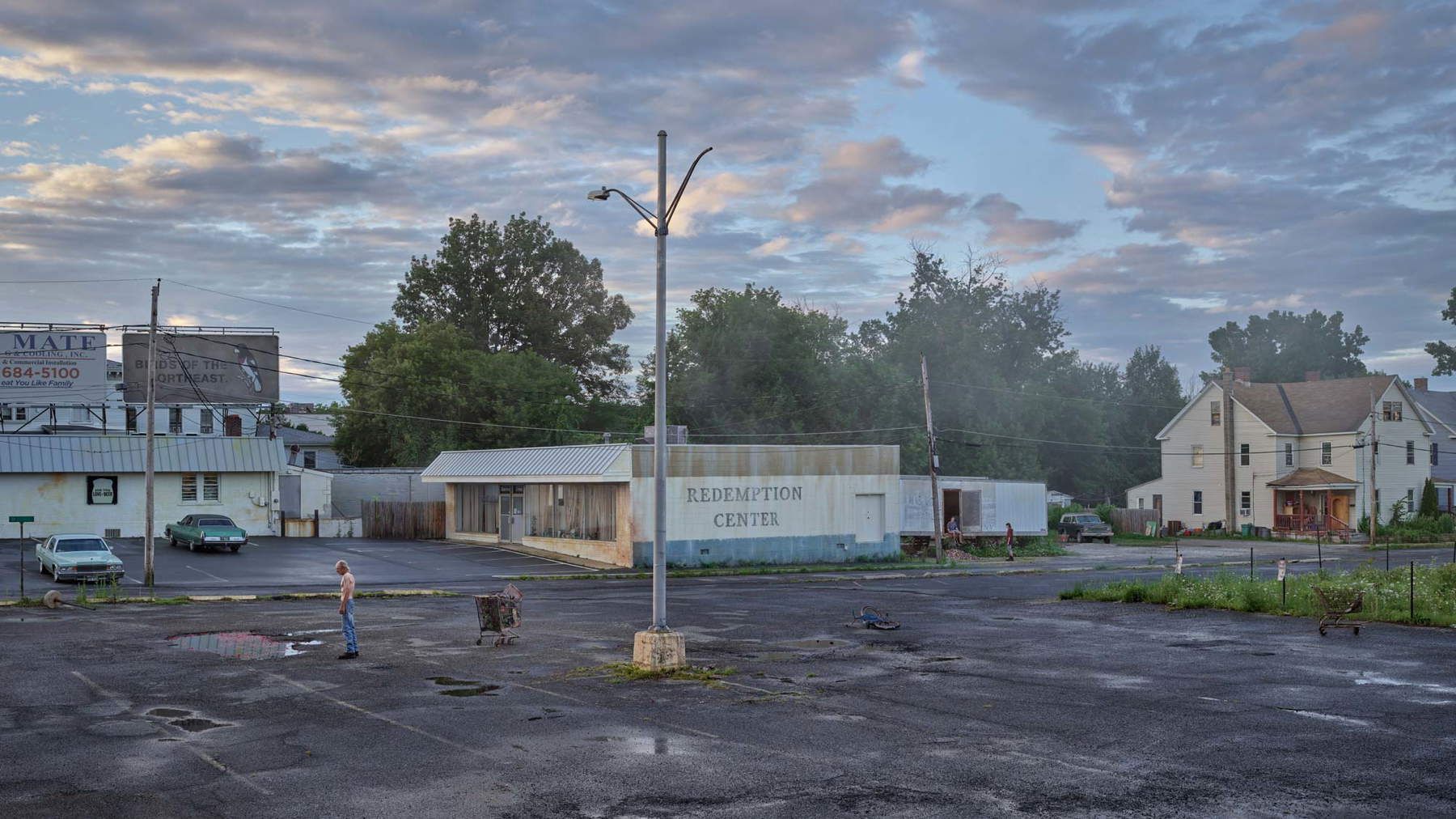
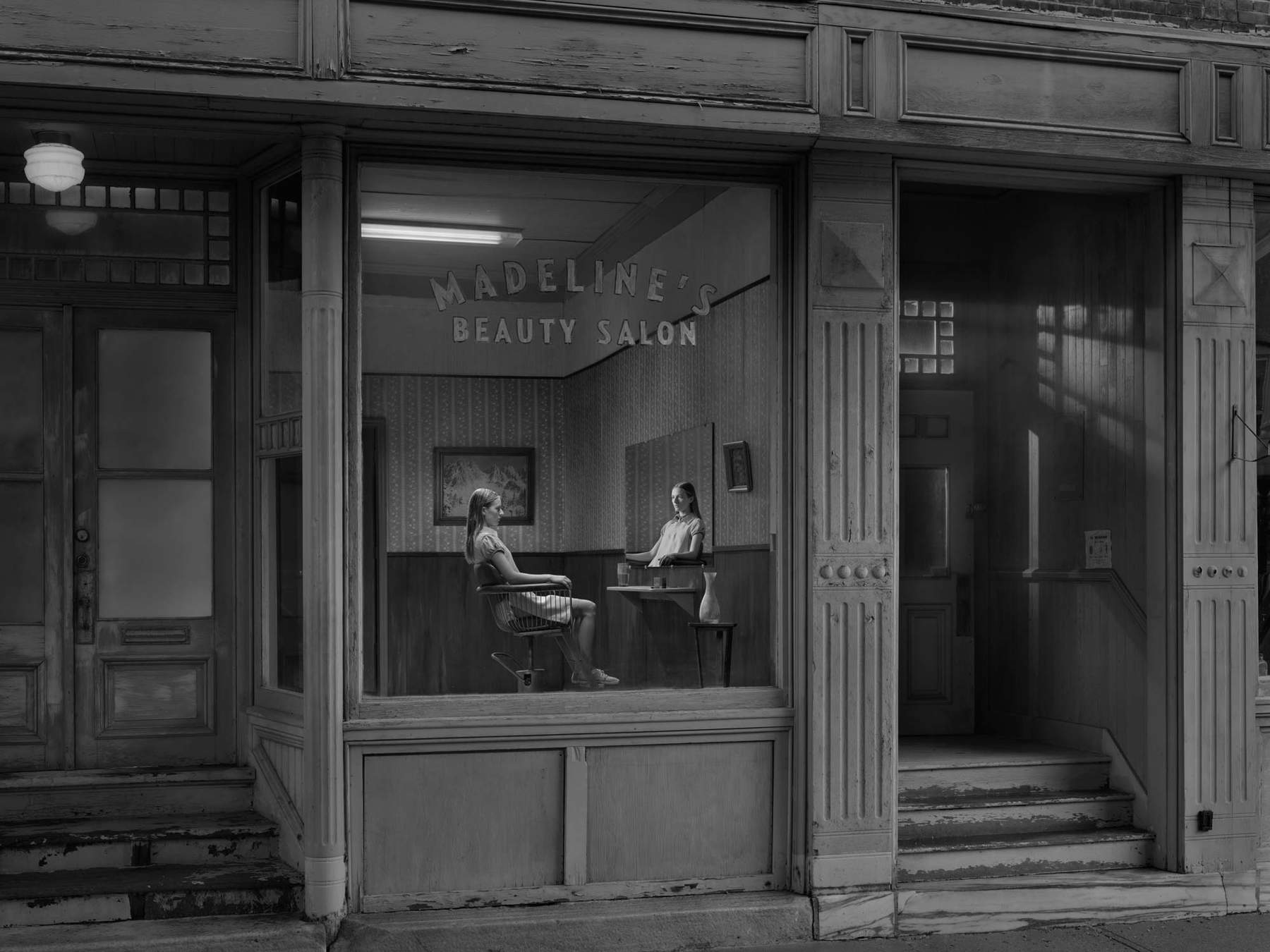
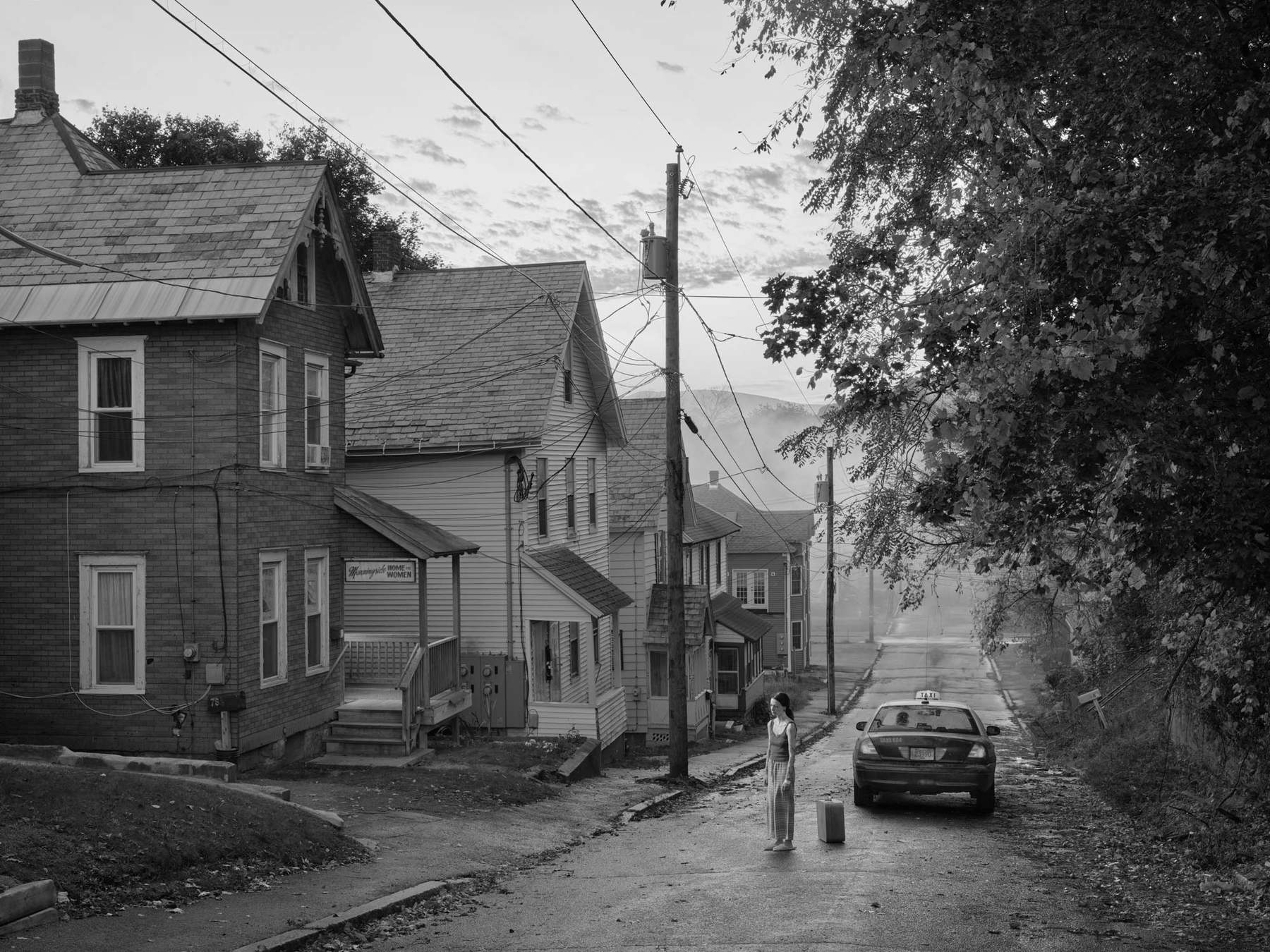
Finally, with the Eveningside series, Crewdson goes deeper into people’s lives, and moves within the confines of everyday life, in the workplaces and desolate spaces of an empty yet living city. The figures that populate the shots are often seen through store windows, in the reflection of a mirror, or framed in a work setting. The gaze peeking into windows is a recurring choice in Crewdson’s work that we have already seen in some of the compositions in Cathedral of the Pines, and once again is reminiscent of Edward Hopper’s portraits, whose work the photographer has explicitly quoted several times (as in the 2020 project Hopperiana. Social distancing before Covid-19 ). As in Hopper, the gaze through the windows allows for an intimate yet detached narrative. The protagonists are crystallized in their moment of reflection, thus generating a sense of suspended time, of waiting and hope.
Crewdson emphasizes the grace of the moment with a more or less intense combination of light and shadow, special effects such as fog, rain, smoke, and mist, and by enhancing the multiplications of reflections, in mirrors, window frames, and shop windows. Thus in Madeline’s Beauty Salon (2021), we watch a woman through a hairdresser’s window, in her impossible solitude, multiplying in the mirror in front of her.
For the first time confronted with black and white, the artist creates a dark, suspended atmosphere evocative of film noir and much classic cinema. So too in Morningside Home for Women where a girl has just gotten out of a cab on a desolate street, which also suggests a hint of hope. The slippers on her feet, the sunrise behind her suggest that she is running from something, and here perhaps she can find a place of serenity. The sinister appearance, the apparent stillness that--I won’t hold it against Crewdson--reminded me of the gothic province of Tim Burton’s Wednesday series, and that of Crewdson’s photos shares an unexpected pursuit of happiness.
Jean-Claude Vergne concludes, in words that live up to the accompanying photos: “These are individuals who remember listening, with their ears glued to the floor, to the ragged tunes of stories of white whales and crippled sailors.”
Warning: the translation into English of the original Italian article was created using automatic tools. We undertake to review all articles, but we do not guarantee the total absence of inaccuracies in the translation due to the program. You can find the original by clicking on the ITA button. If you find any mistake,please contact us.